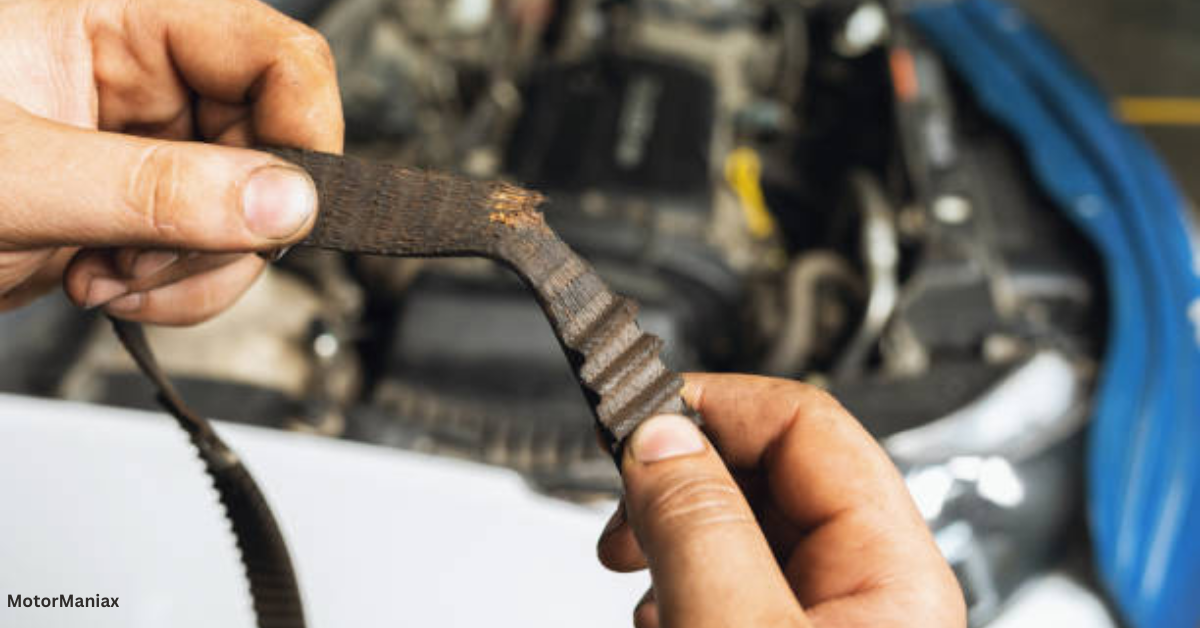At some point, every car owner has questioned how long you can drive with a bad timing belt and what happens if the belt breaks? In This article I will cover this and a lot more about the timing belt in your car.
If the timing belt in your car is bad, you cannot drive at all and if you drive continuously, it can be dangerous. In fact when the timing belt breaks it indicates towards the already done damage which means you cannot drive farther. If the timing belt has broken, you need to tow your car or vehicle and take it to the mechanic for repair.
What is The Timing Belt in a Car?
The timing belt in the car is the component belt that is responsible to control the camshaft of the vehicle engine opening and closing valves.
The opening and closing of the camshaft at the right time is done due to the timing belt. It has the teeth that turn the camshaft in time followed by the crankshaft. However, there are some vehicles and trucks featuring timing chains or gears, which are more durable.
What Happens If The Timing Belt Breaks?
Timing belt is the one by which a car’s engine crankshaft and camshaft behave in ideal synchronization.
So, when the belt breaks this on-going synchronization instantly gets the impact and you can no longer drive the car. Therefore, you should go to the car mechanic once you find out the timing belt has been broken. When timing belts break, you will likely face the following troubles.
1. Engine Will Misfire
Broken timing belt and engine misfire are two closely related issues. As you know the belt works in sync with the valves and cylinders in your engine. However, if the engine itself is defective, misfires can occur.
Misfiring of the engine happens when one of the cylinders does not spark enough or the file is lacking. Other reasons can be faulty spark plug, fuel injector, ignition coil and or worn cylinder.
2. Poor Engine Starting
Another most common trouble when timing belt breaks is that the engine will fail to start. The moment you turn on the car by ignition you will hear the starter sound but the broken belt cannot drive the crankshaft. Therefore, the engine won’t start if the timing belt is broken.
3. Odd Noises
When the timing belt is broken, you will notice the loud ticking noise. It can be due to excessive worn-out condition of the belt. The ticking noise can also mean something is wrong with the engine but ultimately the reason is engine and timing belt related.
Symptoms of Poor Timing Belt
When the timing belt is bad, few signs tell you about it before it’s too late. Here are the symptoms that you should not overlook
- Misfiring of engine
- The car RPMs are changed
- Oil leakage from the engine
- CEL (check engine light) is turned on
- Trouble in car starting
- A lot of noise from engine
- Smoke coming out of the exhaust
FAQs
When should I replace the timing belt?
Ideally, you should replace the timing belt between 40,000 and 100,000 miles of driving. The Cambelts or timing belts should be replaced when you notice the signs of wear and tear or when it’s too weak to maintain the performance. For vehicles with lower mileage the belt should be replaced after four or five years.
Can I check the bad timing belt?
Without removing its parts it is much of a challenge to inspect the timing belt visually. Therefore, it’s always recommended to consult the car mechanic to professionally get the job done. Take your car to the car mechanic so that you can timely replace the belt.
Also, timing belts usually do not give the signs of being defective except engine misfires or noise. It can suddenly fail to perform once it reaches the end of durability. So it’s always make sense to make your vehicle to the professional mechanic.
Does bad timing belt impact acceleration?
Yes, if the timing belt of the engine is bad, it will certainly impact the acceleration. The reason is mismatched synchronization with the engine camshaft and crankshaft. Also bad timing belts negatively impact the engine performance.
So if you replace the worn-out belt it will certainly improve the performance of the car and you will experience smooth driving.
Conclusion
Replacing the timing belt once it reaches the durability limit will timely save you from any expensive damage. You should consult the car manual for knowing when exactly you should replace the belt.
Moreover, when you change the bad timing belt, also replace the water pump, tensioner, and other related components because they may also get defective over time.

